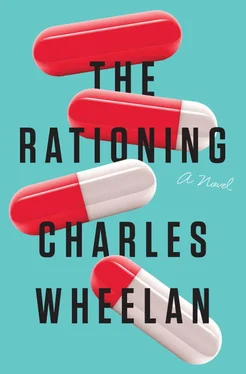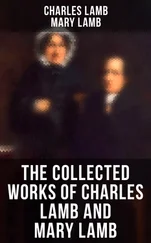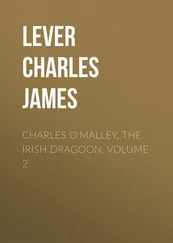“We need to get a better scientific understanding of the virus out there,” the Chief of Staff said breathlessly. “We are working on a statement right now, but we are going to need you to do a press conference. We need a scientist to calm people down.”
“Of course,” I said.
“I’m going to have to call you back,” she said suddenly, and hung up. I sat on the couch waiting for another call. I turned on the television, flipping to CNN, where a somber anchor (no one recognizable in the studio at that hour) was sitting solo above a huge red image on the screen: “BIOTERROR STRIKE, POTENTIALLY NATIONWIDE.” I found it hard to watch; the story was completely inaccurate, and I, who could set the record straight, was sitting on the couch in my boxer shorts. I walked to the bathroom, balancing my secure phone on the sink so I could answer it if it rang while I was in the shower. The call finally came while I was shaving. (I distinctly remember putting the phone to my left ear to avoid the lather on the right side of my face.) “Get yourself to the White House,” the Chief of Staff instructed. “Someone will meet you there. We need to get you on camera for the morning programs.”
“Is there a car coming?” I asked.
“Take a taxi.” She hung up. I finished dressing as quickly as I could, slipping a tie in my jacket pocket to put on later. I walked briskly out of the house into a light rain, prompting me to wonder if I should go back to get an umbrella so I would not be soaked when I went on camera. I decided against it, but then realized I had also left my White House badge behind. I rushed back inside—thinking about the fact that I had not seen any cabs—and grabbed both the badge and an umbrella.
The streets were empty and dark, save for the streetlights reflecting off the damp pavement. I recalled a film professor in college who pointed out to us that cinematographers always hose down the pavement before filming their night scenes to give the shots a glistening effect. That thought lasted just a split second. I jogged half a block to Nineteenth Street, looking both ways. There were no headlights, let alone taxis. I stood there briefly, my mind now spinning with what I knew from basic statistics: if there were no cabs now, the chances of one coming along anytime soon were slim. I patted my breast pocket and realized that I had left my regular cell phone back on my coffee table. I had checked the WeGoNow app back in my apartment, but the closest car was twelve minutes away, which seemed like an eternity. I must have set the phone down after that. I considered waking up one of my neighbors, but I did not know many of them, and the ones I did know did not have a car. Or I could go back to my apartment to get my phone, but there was no reason to think a WeGoNow driver would be any closer. I had deleted my other ride-sharing app after it was reported that their algorithm used crime data, which effectively steered drivers away from low-income neighborhoods.
I saw headlights behind me—no taxi light, but maybe I should flag it down anyway. I stepped into the street, waving my hands. The car swerved away and accelerated. No one was going to pick up a stranger at four in the morning, not even a white guy in a suit (with a tie stuffed in my pocket).
I called the Chief of Staff, figuring that getting a White House car might be the only hope here. “What?” she answered sharply.
“I can’t get a car,” I said. “I’ve been on the street for—” She hung up, or we were cut off. I assumed it was the latter and that she was too busy for me to try calling back. My best bet at that point was a hotel. There was a Marriott about ten blocks away, not close, but what else was I going to do?
ON BOARD AIR FORCE ONE, THE PRESIDENT WAS HUDDLED with his senior advisers. A television set mounted on the wall of the conference room was broadcasting the semi-apocalyptic headlines, all still with a terrorism theme. Some of the more familiar anchors had begun to appear on camera, no doubt roused from bed as I had been. By all accounts, the President was poised and calm. Perhaps that was the athlete in him, exercising an ability to screen out distractions in the midst of a situation that one participant described as “trying to play chess at night in a sandstorm.” [8] Martin “Bo” McCormick, The Source of My Courage (New York: Little, Brown, Simon & Schuster, 2032).
The President and Chief of Staff, in consultation with others around the table, had agreed on four key priorities: (1) refute the terrorist story; (2) correct public misunderstanding of the virus (my job); (3) get the President on air to reassure the nation; (4) reach out to our Asian allies to reassure them (perhaps falsely) that we remained “steadfastly committed” to the South China Sea Agreement. It was a laudable strategy given the unfolding chaos, but, as the Communications Director told the Chief of Staff, “When your top two priorities involve the words ‘refuting’ and ‘correcting,’ you’re pretty much fucked.”
A new face appeared on one of the cable channels, the first “outside authority” to go on camera after the story broke. The Communications Director unmuted the sound so the room could hear “Retired Virus Expert” Dr. Vikram Banerjee: “The terrorists have most likely introduced a virulent virus, such as MERS—”
“That would be Middle Eastern Respiratory Syndrome,” the host offered.
“That’s correct,” Banerjee said confidently. “It’s a potent virus because it is airborne and can spread quickly via almost any kind of human contact.”
“What would you advise for Americans right now?” the host asked, his hand perched under his chin in a way that suggested grave concern.
“The key is to stay away from other people or any other place where the virus might spread,” Banerjee advised.
The Communications Director let out something between a growl and a shriek, muting the sound once again. “Where did they find this douchebag?” he asked to no one in particular.
“We need to get on air,” the Chief of Staff said. “We have to get the real story out.”
“I’ve got the President booked on all the morning shows,” the Communications Director said. “We can do it using the video uplink on the plane.”
The President interjected, “No, it should be an address. I don’t want to be answering questions. I want to make a clear, uninterrupted statement about what is happening—and what is not happening.”
“You’re going to have to answer questions,” the Communications Director said.
At that point, a junior staffer walked into the conference room and handed two sheets of paper to the Communications Director. “Oh, Christ,” the Communications Director said as he read.
“What?” the President asked.
“The Speaker just issued a statement,” the Communications Director answered. He began reading aloud as his eyes raced down the page. “ ‘The House of Representatives and I stand ready to provide leadership… blah, blah.’ Oh, my God: ‘Now is a time for us to reach out to our allies—’”
The National Security Adviser said, “She’s making the China play.”
“Of course she is,” the Chief of Staff said. “She’s going to deliver the China Dormigen.”
“Did she at least say it’s not a terrorist attack?” the President asked.
“Second-to-last paragraph,” the Communications Director said as he continued reading. “ ‘I want to emphasize that at this point we have no evidence of a terrorist attack.’”
The Chief of Staff exclaimed, “That’s it? No evidence of a terror attack? How about, we know for certain—”
The Communications Director cut her off, “It gets worse. Last graph: ‘After we have confronted this crisis, I will personally lead an investigation into how America allowed its Dormigen stocks to become so disastrously low. I am especially troubled by the privatization of our Dormigen production.’”
Читать дальше












